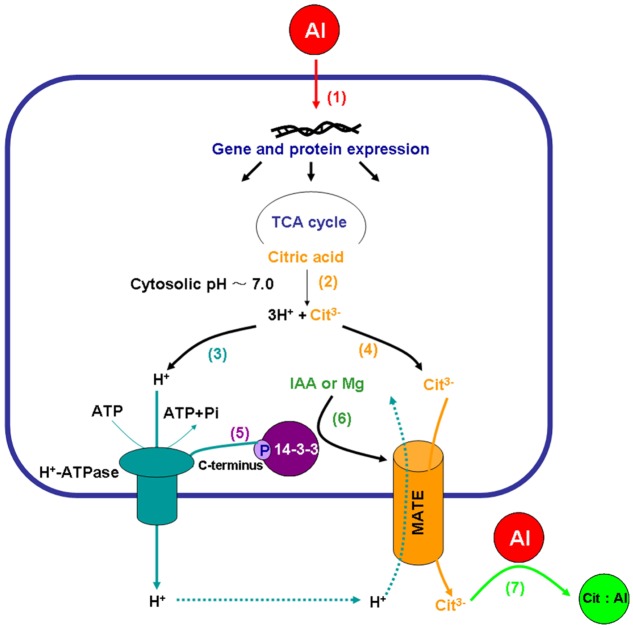FIGURE 2.
The proposed regulatory roles of plasma membrane H+-ATPase in Al-induced citrate exudation from plant roots. Al toxicity is perceived by root cells, inducing expression of numerous genes and proteins (1), including tricarboxylic acid (TCA) cycle enzymes, the plasma membrane H+-ATPase, 14-3-3 proteins and MATE transporters. Citric acid is dissociated to citrate anion (Cit3-) and H+ at a relative high cytosolic pH∼7.0 (2), followed by the plasma membrane H+-ATPase-mediated H+ efflux (3) coupled with MATE-mediated citrate (Cit3-) exudation (4) possibly associated with proton influx. The phosphorylation of the plasma membrane H+-ATPase and interaction with the 14-3-3 proteins (5) were enhanced by the application of Mg and/or IAA (6) under Al stress, resulting in activation of both the plasma membrane H+-ATPase and the MATE citrate transporter. Citrate exuded from plant roots forms a stable non-toxic complex with Al in the rhizosphere (7).

